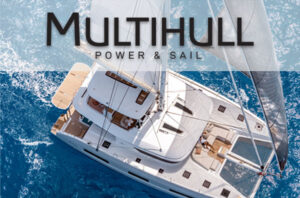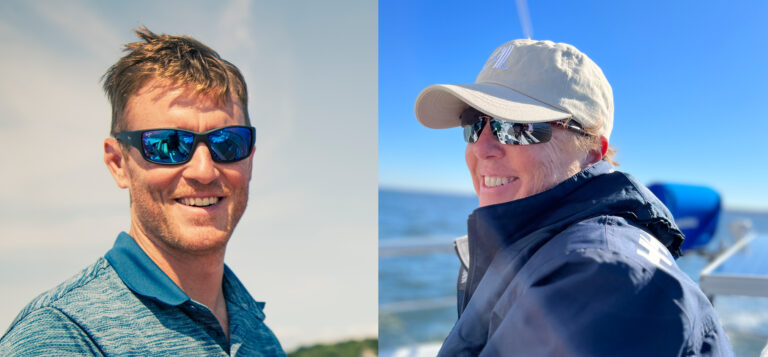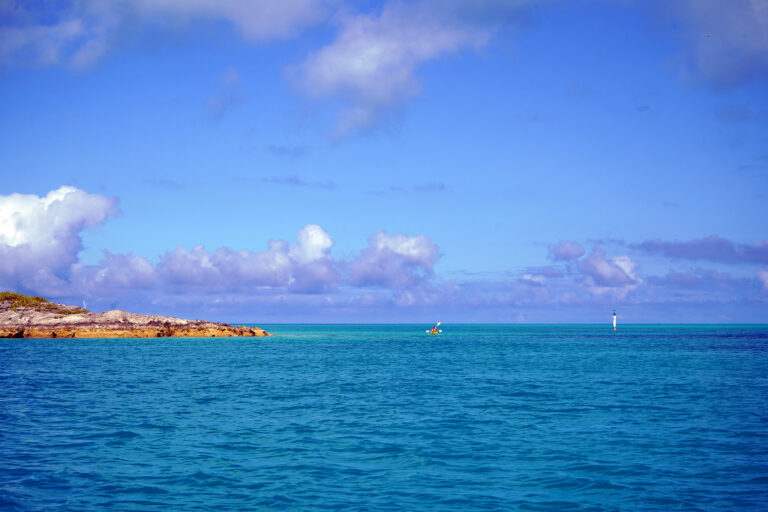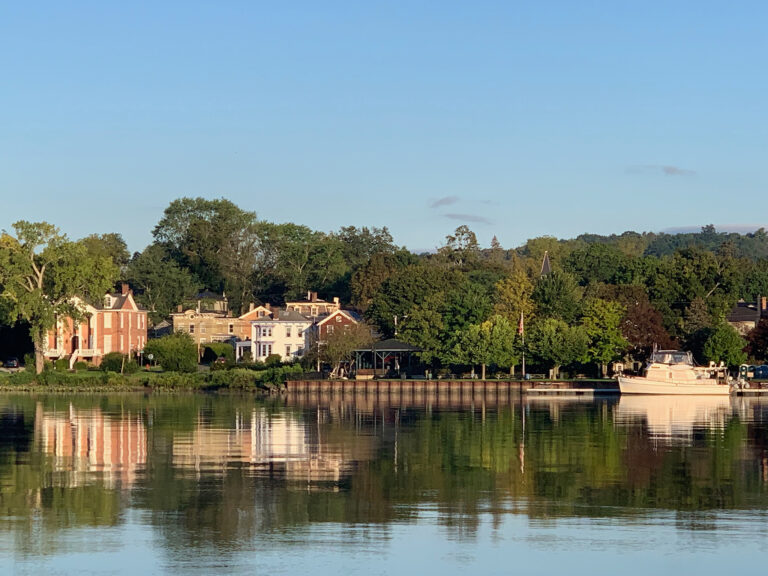Whether it’s a Polynesian sailing canoe venturing off into the unknown in the 11th century or an AC72 streaking across San Francisco Bay in 2013, multihulls have long held a special place at the cutting edge of sailboat design and performance.
The last couple of decades, in particular, have seen an explosion in what multihulls are capable of, thanks to modern boatbuilding materials and the almost limitless creativity of today’s engineers and designers.
What follows is a survey of some of the fastest and most spectacular multihulls the world has ever seen—many of which may be slicing their way through a body of water near you.
Spindrift 2
Founded in 2011 by Yann Guichard and Dona Bertarelli—sister of Ernesto of America’s Cup fame—the express purpose of Sprindrift Racing is to push the envelope in terms of multihull sailing. To this end, the team invested in three separate boats: a Decision 35 one-design catamaran for inshore racing, an MOD 70 trimaran and—most spectacularly of all—the 131-foot maxi-tri Spindrift 2.
Originally launched as Banque Populaire V, the VPLP-designed behemoth is already the current Jules Verne Trophy holder, having circumnavigated in just over 45 days with Loick Peyron at the helm back in early 2012. However, Guichard and Bertarelli have since embarked on an extensive redesign to further improve the boat’s ability in lighter air—the bane of every distance-record hopeful. The team is currently midway through a multiyear campaign that has included everything from a Fastnet Race to attempts at various shorter-distance speed records, including the 24-hour record and a possible Jules Verne round-the-world attempt in late 2015.
GC32 Version 2
Can’t wait to see a fleet of full-foiling catamarans doing battle as part of the 35th America’s Cup? Well then, don’t. In the wake of the last Cup, designers of the already super-fast GC32 one-design catamaran decided to upgrade their creation with T-shaped rudders and checkmark-shaped AC72-style daggerboards, so that their boat is now full-foiling as well. The they unleashed the boat on a professional tour of their own. Unlike the AC72s—which were exceedingly difficult to keep airborne, as their design rule was written with the express intent of preventing them from flying—the GC32 is reportedly a breeze to fly and easily lifts out of the water in true wind speeds of as low as 8 knots. Once airborne the boat typically rockets along at 2.5 times the wind speed with sheets cracked. The result: inshore buoy racing at 30-plus knots when the wind is up. Why wait for Larry Ellison to decide how and where he wants to make yet more money off the Cup when you’ve already got action like this to enjoy?
l’Hydroptère
Long before foiling Moths and airborne AC72s, there was French sailor Alain Thébault and “the dream”—to create a sailboat that could fly, and in the process go faster than any sailboat had ever gone before. After years of trying—and many, many failures, some of them catestrophic—Thébault finally succeeded, setting a 500-meter speed record of 44.81 knots in 2007 and a nautical mile record of 43.09 knots in 2008. l’Hydroptère will also forever retain a place in history as the first true sailboat (as opposed to a kiteboard) to break the 50-knot barrier, after it hit a top speed of 56.3 knots on December 21, 2008. Since then, the boat has been reconfigured for offshore sailing. However, it has been stymied by weather in an attempt to set a new record on the storied Transpac course from Southern California to Hawaii. Thébault has also set off in a whole new direction, with what he calls iDroptere, a pure-speed vessel he hopes will someday go 80 knots or more. Only time will tell if he succeeds. However, given the tenacity with which Thébault pursued his first dream, it would be unwise to bet against him.
Flying Phantom
One of the great things about beach cats is that they allow pretty much anyone to get a dose of adrenaline. Case in point: no sooner did Phantom International see a bunch of catamarans foiling around San Francisco Bay in the last America’s Cup than the company put L-shaped foils and T-shaped rudders on it F18 world champion design to create the new “Flying Phantom.” Soon after that, the boat both demolished the fleet and set a new record in the distance race at the Eurocat regatta in Carnac, France. The boat is now available for sale to speed freaks in the United States. The beach cat world will never be the same.
Vestas Sailrocket 2
Like Thébault, Australian sailor Paul Larsen is the kind of guy who simply does not give up, no matter what the odds or the severity of the setbacks. After an 11-year struggle, he not only set a new sailing speed record in 2012, he absolutely smashed it, going an incredible 65.45 knots across the windswept waters of Walvis Bay in Namibia—a record that stands to this day, a veritable eternity in this era of constant change. Since then Larsen and his team have been considering taking their concept offshore to see if they can’t pick off some longer-distance records currently held by more conventional multihulls. According to Larsen: “Although speed sailing provided a great environment to demonstrate both the innovative concepts and the team’s potential, the next challenge should be to demonstrate its practical application…a stable craft that can be practically sailed from A to B in the broad range of conditions you can expect to find offshore.” In other words, you ain’t seen nuthin’ yet.
C Class
What goes around, comes around. No sooner had things wrapped up with the 34th America’s Cup than all eyes (at least those eyes focused on cutting-edge multihull racing) were turning to the C Class world championship regatta off Falmouth, England, otherwise known as the “Little America’s Cup.” For years, this event has served as a proving ground for some of the world’s most innovative designers, including several who recently led the charge in America’s Cup development, thanks to their pioneering work with wing sails. In 2013, though, turnabout was fair play, as it was the America’s Cup that took the lead in terms of full foiling—not that it took the C Class long to catch up again. At the 2013 Little America’s Cup, France’s Franck Cammas ran away with the title at the helm of a full-foiling cat named Groupama, and in the years since America’s Cup veterans and aspirants have been taking part in regattas around the world, full-foiling on both C Cats and their smaller cousins, the singlehanded As. Clearly for those with America’s Cup ambitions, these boats are the place to be.
IDEC
To paraphrase a famous marketing tag line from the 1990s: it’s gotta be the boat. Or does it? At one point in 2013, France’s Francis Joyon—a man renowned for his modesty and almost superhuman endurance—held the records for the fastest solo circumnavigation (57 days, 13 hours), the fastest solo 24-hour run (666.2 miles) and the fastest solo transatlantic (5 days, 2 hours). Since then the 24-hour record has fallen, but that in no way diminishes Joyon’s extraordinary accomplishment.
Of course, the boat probably had something to do with it as well. Launched in 2007 for the express purpose setting a new round-the-world record, the Nigel Irens/Benoit Cabaret-designed IDEC measures 97 feet long and can carry up to 5,600-sqaure-feet of sail on her 104-foot mast. In setting the 24-hour record, IDEC maintained an average speed of 27.75 knots. In the course of his solo world circuit, Joyon averaged 15.84 knots all the way around the planet. And neither the boat nor the man looks ready to slow down any time soon.
MOD 70
The goal was a simple one: create a class of turnkey 70-foot racing trimarans that would be relatively cheap to run and still provide spectacular racing, both inshore and across the world’s oceans—think the spectacular ORMA 60 circuit of 1980s and 1990s with a little less chaos. And while the class has faced some challenges financially, thanks to a still challenging global economy, the boats themselves have more than delivered on their promise. After kicking off with the Krys Ocean Race from New York to Brest, France, in 2012, the six-boat fleet raced on a European Tour that was won by legendary French sailor Michel Desjoyeaux aboard Foncia in the final hours of the very last race of the series.
In the absence of a title sponsor, the fleet began participating in other non-class-specific competitions like the Transat Jacques Vabre in 2013. More recently a new U.S.-flagged Orion Racing team has gotten into the mix, and class organizers have announced a second Krys Ocean Race set to take place in early 2016—this time from Brest to New York. If you missed these boats the first time they visited the Big Apple, do yourself a favor and don’t miss them the second time around. It’s not often American sailors get to see these kinds of racing machines on this side of the Atlantic, and it’s more than worth the effort.








